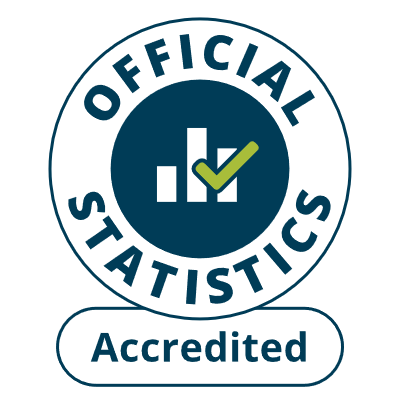
 Enrolments at Welsh HEIs by level and year (2000/01 to 2008/09 - all data amended to reflect standard registration population change in 2007/08)
Enrolments at Welsh HEIs by level and year (2000/01 to 2008/09 - all data amended to reflect standard registration population change in 2007/08)
Archived (English only) – No longer updated.
None
|
||||||||||||||||||||||||||||||||||||||||||||||||||||||||||||||||||||||||||||||||||||||||||||||||||||||||||||||||||||||||||||||||||||||||||||||||||||||||||||||||||||||||||||||||||||||||||||||||||||||||||||||
Metadata
Title
EDUC0127 - Enrolments (All year] at Welsh HEIs by level and mode of study [2000/01 to 2007/08 - all data amended to reflect standard registration population change in 2007/08]Author
ETES2: Welsh Assembly GovernmentNotes
Last update: Jan 2010Was added to StatsWales: Mar 2010
Next Update: No longer updated.
Will be added to StatsWales by: Mar 2011
Source: Higher Education Statistics Agency (HESA) Student Record.
Contact: He.stats@wales.gsi.gov.uk
These data provide information on students enrolled at Higher Education Institutions in Wales and Welsh domiciled students at UK Higher Education Institutions.
The Higher Education Statistics Agency (HESA) collect data on students, staff and resources of higher education institutions (HEIs) in the UK. The data presented in this bulletin is taken from HESA's Student Record which contains information on all students enrolled on credit bearing courses at UK HEIs. Further information about HESA and their data collections can be found on their website www.hesa.ac.uk
The Student Record contains information about individual enrolments, which, because a student can be enrolled on more than one programme of study, will exceed the number of students. Previous analysis has shown that for Welsh HEIs full-time enrolments are less than 1 per cent higher than full-time student numbers; part-time enrolments are less than 2 per cent higher than part-time student numbers.
This table is based on the HESA standard registration population.
Coverage
The HESA standard registration population is a count of all enrolments within the reporting year 1 August to 31 July. Students who leave within 2 weeks of their start date, or anniversary of their start date, and are on a course of more than two weeks duration, are not included in the standard registration population. Dormant students, students who are writing-up, students on sabbatical, incoming, visiting and exchange students from overseas and students studying for the whole of their programme of study outside of the UK are also excluded from this population. Prior to 2000/01 the standard population was based on enrolments as at 1 December each year.
It should be noted that from 2007/08 writing-up and sabbatical options under the mode of study 'part-time and other' have been excluded for the standard registration population and the December population. For comparison purposes all data from 2000/01 to 2006/07 data has been recalculated on this basis in this table.
Postdoctoral students are not included in the HESA Student Record.
The HESA qualifications obtained population is a count of student enrolments associated with the award of an HE qualification (excluding HE institutional credits) during the reporting year. For the qualifications obtained table awards from dormant status are assigned to their previous mode of study, i.e. full-time or part-time.
Rounding strategy
The presentation of figures in this table follows the principals of the HESA rounding strategy. The strategy is intended to prevent the disclosure of personal information about any individual. This strategy involves rounding all numbers to the nearest 5. A summary of this strategy is as follows:
· 0, 1, 2 are rounded to 0 and represented as '*'.
· All other numbers are rounded to the nearest 5
Total figures are also subject to this rounding methodology; the consequence of which is that the sum of numbers in each row or column may not match the total shown precisely.








